Best Woods for Building Cabin
- July 26, 2023
- 1 comment
Creating a cabin – a place of solitude, peace, and refuge – is an appealing project for many. There’s something truly enchanting about designing a structure that feels both unique and nostalgic at the same time. As you prepare to embark on this adventure, one of the first considerations is deciding on the most appropriate wood to use.
Choosing the perfect timber for your cabin is about more than just aesthetic appeal. Several factors such as durability, cost, maintenance needs, and local availability come into play. Below, we delve into some of the top choices for cabin construction:
1. Pine: The Budget-Friendly Powerhouse
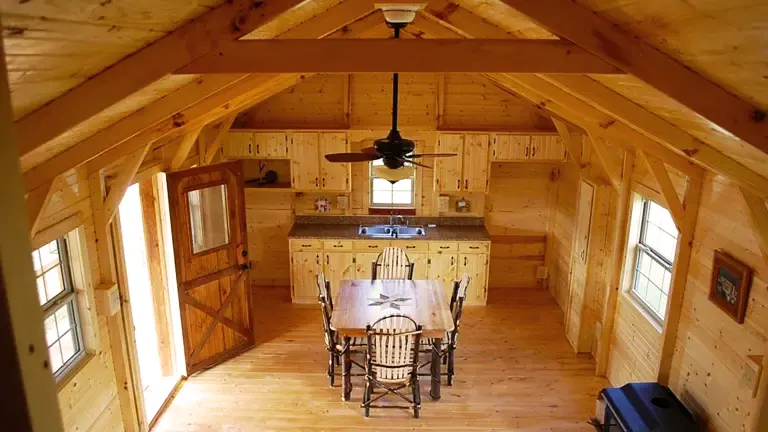
Pine stands out as an alluring choice for those looking to build a cabin without breaking the bank. As one of the most prevalent types of wood, it offers a unique blend of affordability and availability. Its weight-to-strength ratio also plays in its favor, making it lighter than many hardwoods yet still strong enough for building structures. This quality enhances its workability, making it an excellent choice for amateur builders and professionals alike.
Two of the most popular types of pine used in cabin construction are Eastern white pine and Southern yellow pine. Both varieties offer their own distinct advantages.
Eastern White Pine
Eastern white pine is widely appreciated for its ease of use and its light, almost white color. This color palette can transform the interior of your cabin, giving it a bright, open feel. Furthermore, Eastern white pine features a uniform texture with a straight grain, contributing to a clean and modern aesthetic.
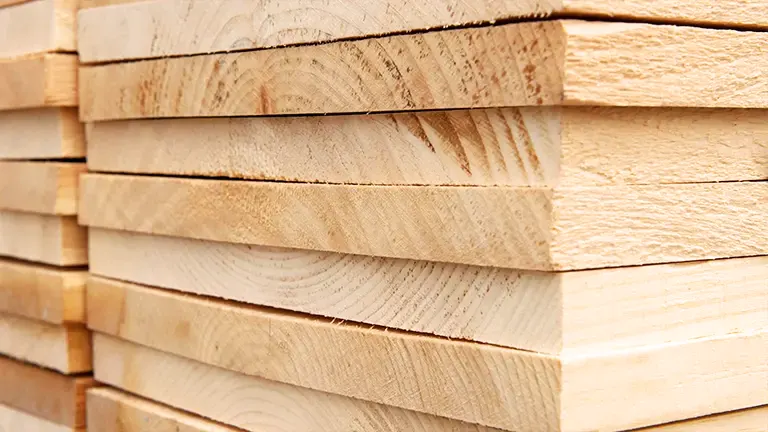
Southern Yellow Pine
Southern yellow pine, on the other hand, is more robust and denser than its Eastern white counterpart. As the name suggests, it sports a yellowish color, which can imbue your cabin with a warm, inviting glow. This variety is also acclaimed for its stiffness, strength, and relatively high load-bearing capacity, making it suitable for structural applications.

Pine’s light color serves as a blank canvas, allowing you to personalize your cabin’s appearance through staining. Its ability to absorb stains well lets you tweak its natural hues to complement your design preferences. Whether you lean towards a darker, vintage look or prefer keeping the light, fresh appearance, pine can cater to your aesthetic taste.
However, it’s essential to note that pine, as a softwood, might not exhibit the same durability as hardwoods like oak or cedar. It tends to be susceptible to scratches and dents, and its resistance to decay and pests isn’t as high. Therefore, cabins built with pine require regular maintenance. Applying suitable finishes and periodically checking for signs of wear can go a long way toward preserving the beauty and structural integrity of a pine cabin.
Despite these considerations, the versatility and cost-effectiveness of pine make it a top contender for cabin construction. Its adaptability to different styles and settings, combined with its economic advantage, creates a compelling case for choosing pine as your cabin’s primary building material.
Interesting Facts
- Pine is one of the most widespread types of trees, and pine forests cover vast areas, especially in the Northern Hemisphere.
- There are approximately 126 species of pine trees, including varieties like Eastern white pine and Southern yellow pine.
- Pinewood was commonly used in shipbuilding in the past due to its strength and availability.
- Pine needles can produce essential oils, often used in aromatherapy for their calming and purifying qualities.
2. Cedar: A Harmonious Blend of Durability and Aesthetics
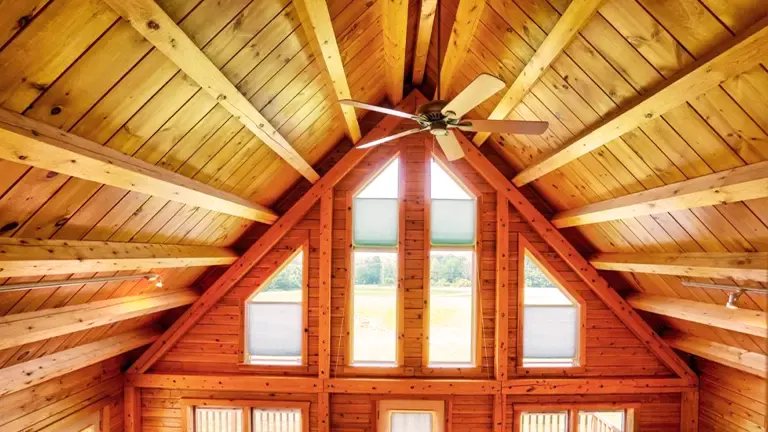
When one thinks of building a cabin that resonates with nature, cedar comes to mind. Known for its incredible durability, resistance to decay, and distinctive aroma, cedar has become a wood of choice for cabin construction. The rich, warm hues and the textured grain pattern of cedar add depth and character to any structure, making it a visually stunning choice.
One of the defining characteristics of cedar is its natural resistance to rot and insect damage. This resistance is due to the wood’s natural oils, which act as a deterrent against pests and decay. This natural protection enhances the lifespan of the wood and reduces the need for chemical treatments, making cedar an eco-friendly choice.
The aroma of cedar is another alluring attribute. The wood’s characteristic scent offers a unique sensory experience, enhancing the rustic feel of your cabin. Every visit to your cabin will be greeted with this refreshing aroma, creating an instant connection to nature and a sense of tranquility.
There are several species of cedar to choose from, but Western Red Cedar and Northern White Cedar are particularly well-suited to cabin construction.
Western Red Cedar
Western Red Cedar is prized for its rich, reddish-brown hue and straight grain, making it a visually appealing option for your cabin. However, it’s not just a pretty face. Western Red Cedar is a robust, durable wood, with a high degree of natural resistance to decay and insects, thanks to its unique chemical composition. Additionally, it offers excellent insulation properties, which can contribute to a more energy-efficient cabin.

Northern White Cedar
Northern White Cedar is another excellent option, known for its lighter color, straight grain, and superior durability. Like its Western Red counterpart, Northern White Cedar is naturally resistant to decay and pests, making it a low-maintenance option. It’s also relatively light and easy to work with, making the construction process smoother.

While cedar generally comes with a higher price tag than pine, this initial cost can be offset by the long-term benefits. Cedar’s low-maintenance requirements and natural longevity mean fewer expenses down the line in terms of replacements, repairs, and treatments.
In summary, cedar provides a perfect blend of practicality and aesthetic appeal, making it a worthwhile investment for your cabin. Its charm, durability, and low-maintenance nature make cedar a standout choice for a cabin that’s meant to last, offering you a beautiful retreat that ages gracefully with time.
Interesting Facts
- Cedarwood is known for its distinct, pleasant aroma. The smell comes from natural oils in the wood that also make it resistant to insects.
- Cedar trees can live for over a thousand years. The “Thuja Plicata” or Western Red Cedar, can live up to 1,400 years.
- In many cultures, cedar trees symbolize strength, long life, and endurance.
- Cedar chips are used as a natural moth repellent, protecting clothing from moth damage.
3. Oak: The Embodiment of Strength and Elegance

Oak is a hardwood that has been renowned for centuries for its unparalleled strength and aesthetic appeal, bringing a robust and timeless quality to cabin construction. Two of the most commonly used species in cabin construction are Red Oak and White Oak, each with its unique attributes.
Red Oak
Red Oak is characterized by its strength and stunning natural patterns, making it a top-tier choice for those seeking durability and elegance in their cabin build. This wood variety stands out with its warm reddish-brown tones that enrich over time, adding a radiant ambiance to your cabin. The grain of Red Oak is typically straight and coarse, adding unique texture and depth to your cabin’s appearance.

White Oak
White Oak, on the other hand, is a bit denser than Red Oak, making it an even sturdier choice for cabin construction. It exhibits a straight grain and comes in lighter shades compared to Red Oak, featuring hues from light to medium browns. Its highly resistant nature and stunning aesthetic features make it a preferred choice among many cabin builders.

It’s worth noting that the strength and density of oak, while offering numerous benefits, also present a few challenges. Working with oak can be more demanding compared to softer woods like pine or spruce, requiring robust tools and additional effort in cutting and shaping. The construction process may be more time-consuming and can potentially raise the construction costs.
Furthermore, both Red and White Oak tend to sit on the higher end of the price scale, with White Oak generally being more expensive. The cost is influenced by factors such as the size of the lumber and its grade or quality. However, given the exceptional durability and timeless aesthetic appeal of oak, it could be seen as a cost-effective choice in the long run.
In essence, an oak cabin is a structure built to stand the test of time. With its significant lifespan, an oak cabin can be a legacy, a structure to be passed down through generations. Whether you opt for Red or White Oak, their majestic grain patterns, warm tones, and inherent strength make oak an investment in longevity. Your oak cabin will not just be a building, but a lasting testament to your love for nature and quality.
Interesting Facts
- In many cultures, the oak tree symbolizes strength, morale, resistance, and knowledge.
- Oak trees are known to live several hundred years. Some oaks, like the white oak, can live over 600 years under optimal conditions.
- Oak was often used to make European ships in the Middle Ages due to its strength and resistance to decay.
- Oak trees produce acorns, which are a vital food source for many types of wildlife, from birds to mammals.
4. Spruce: The Lightweight Champion of Cabin Construction

Spruce is a popular choice in the realm of softwoods, presenting a compelling blend of affordability, workability, and appealing aesthetics. It has gained favor among both novice builders and seasoned veterans, thanks to its fuss-free approach to cabin construction. When choosing spruce for your cabin, two particular species often come into play: Sitka Spruce and Norway Spruce.
Sitka Spruce
Hailing from the North American west coast, Sitka Spruce is one of the most prominent species used in cabin construction. Its lightness and strength lend themselves well to building, contributing to a less labor-intensive and quicker construction process. This ease of use can be particularly advantageous in log cabin construction, where the size and weight of logs can significantly impact the building process.
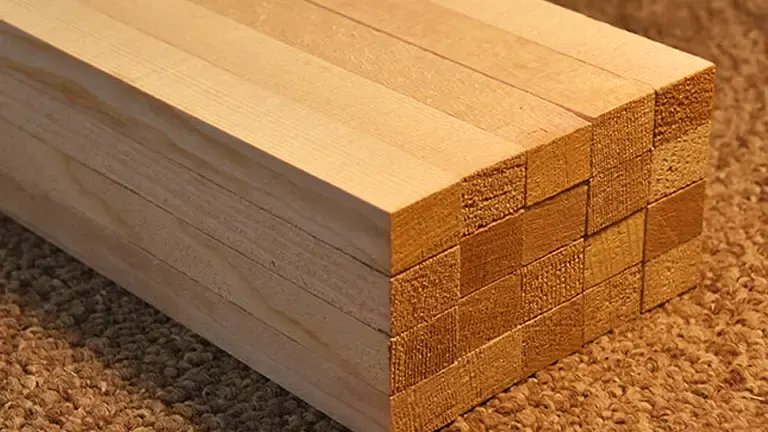
Norway Spruce
On the other side of the pond, Norway Spruce is a prevalent choice in Europe. Like its Sitka counterpart, it is strong and relatively light, simplifying the building process. The color of Norway Spruce varies from white to pale yellow, contributing to a light and welcoming feel within the cabin. Its straight grain leads to an aesthetically pleasing, uniform look.
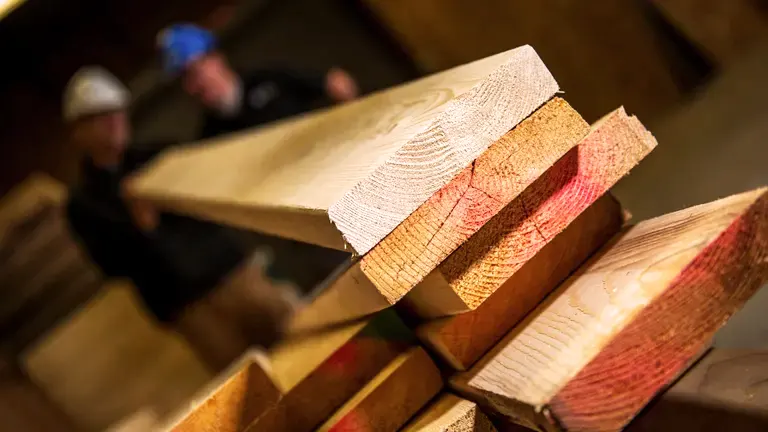
Spruce, whether Sitka or Norway, shares certain characteristics as a softwood. For one, it does not naturally offer the same level of resistance to decay and pests as some hardwoods. Regular maintenance, including the use of appropriate finishes and treatments, is therefore crucial. This maintenance regime may include regular inspections for any signs of rot or infestation, prompt treatment of any issues found, and the application of sealants or stains to protect the wood.
While spruce may not provide the long-term durability of hardwoods like oak or cedar, its lower cost makes it an attractive option for cabin builders working within a tighter budget. This affordability, however, does not compromise its beauty. Spruce can offer a visually pleasing finish that can enhance the charm and warmth of your cabin.
In summary, Spruce’s easy workability, appealing aesthetics, and cost-effectiveness make it a solid contender in the world of cabin construction. Despite requiring commitment to maintenance, the budget-friendly nature and beautiful finish of spruce can indeed bring your dream of a cozy, rustic cabin to life.
Interesting Facts
- Spruce trees, particularly the Norway spruce, are commonly used as Christmas trees.
- The wood from spruce trees is often used to make soundboards in high-quality pianos and guitars due to its tonal quality.
- The Sitka spruce is one of the tallest types of trees and can grow up to 100 meters high.
- Spruce trees can live up to 800 years or more. The Old Tjikko, a Norway spruce located in Sweden, is estimated to be around 9,550 years old, making it one of the world’s oldest trees.
Innovative Ideas for Your Cabin
1. Salvaged Wood: The Eco-friendly Alternative
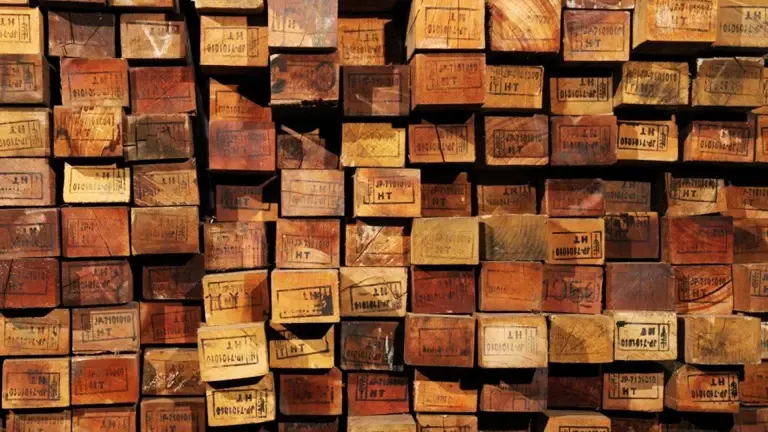
If sustainability is high on your priority list, then salvaged or reclaimed wood is an excellent choice for your cabin construction. This environmentally-friendly option repurposes old wood, thereby reducing the demand for new wood and preventing the material from going to waste in landfills.
Salvaged wood comes with its unique history, adding a special narrative to your cabin build. Whether sourced from old barns, warehouses, or other structures, each piece of reclaimed wood brings a story and character, lending your cabin a truly one-of-a-kind aesthetic.
In addition to its historical charm, salvaged wood also offers an element of unpredictability in its appearance. From different patinas, and nail holes, to weathering effects, each piece of salvaged wood can add a distinct and rustic touch to your cabin, while also serving as a conversation piece.
2. The Mix and Match Approach

The beauty of building your cabin is that you’re not necessarily limited to a single type of wood. Combining different types of wood allows you to leverage the unique benefits of each species, creating a cabin that is both functional and aesthetically appealing.
For instance, using cedar for the exterior walls capitalizes on its natural resistance to decay and pests, ensuring a durable shell for your cabin. Pine could be an excellent choice for interior walls, given its lightness, affordability, and the bright, inviting ambiance it creates. And for flooring, a more robust and resilient option like oak could be a perfect choice, due to its superior durability and timeless beauty.
This mix and match approach not only optimizes the functional aspects of your cabin but also enhances its visual appeal by introducing a variety of textures, grains, and colors.
3. Incorporating A Rustic Touch
For those desiring a truly rustic and natural feel, leaving the wood in a more untouched state can add a unique aesthetic touch to your cabin. One way to achieve this is by using live-edge wood, where the natural edge of the wood is left intact instead of being cut away.
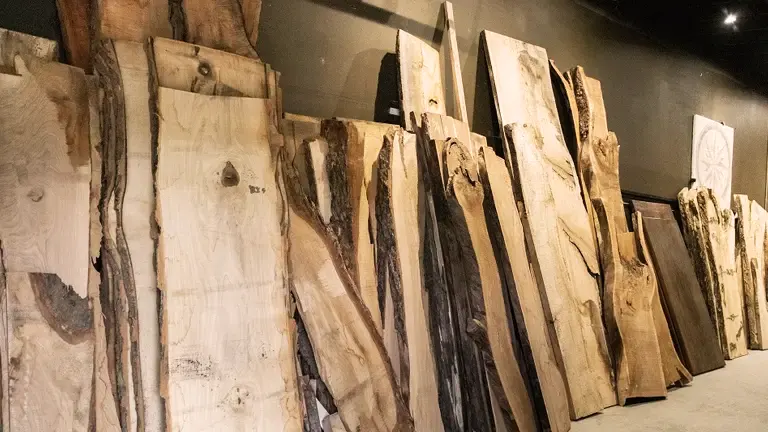
Live edge wood can create striking countertops, benches, or shelves, adding a sense of organic beauty and connection to nature. The irregular edges and unique contours of each piece bring the outside in, blurring the line between the cabin and the natural world surrounding it.
This rustic approach can complement the cozy, warm atmosphere of your cabin while also serving as a statement of your appreciation for nature’s inherent beauty.
In conclusion, whether you choose one type of wood or a combination, opt for reclaimed wood or decide to incorporate natural elements like live edge wood, your choices reflect your personal style and values. So take the time to explore these options and build a cabin that not only shelters you but also resonates with your love for nature and sustainable living.
Concluding Thoughts
Building a cabin starts with selecting the right wood, each type offering unique benefits. Pine and spruce are affordable and easy to work with, though they require maintenance. Cedar offers durability with natural resistance to rot and insects, providing a low-maintenance, rustic option. Oak is strong and insulating, ideal for colder climates, and has visually striking grains. For those environmentally conscious, salvaged wood offers a sustainable and characterful choice. Ultimately, the best wood depends on personal preferences, balancing practicality, aesthetics, and environmental impact. This decision is not just about functionality but also about crafting a space that aligns with your values and lifestyle.

Ultimately, the best wood depends on personal preferences, balancing practicality, aesthetics, and environmental impact. This decision is not just about functionality but also about crafting a space that aligns with your values and lifestyle.
FAQs
- Which type of wood is the most durable for building a cabin?
While several types of wood exhibit strong durability, oak, and cedar are often cited for their exceptional resistance to wear and tear. Oak is notably dense, making it highly durable, while cedar’s natural resistance to rot, decay, and insect damage enhances its longevity. - What’s the most cost-effective wood for building a cabin?
Pine and spruce are often considered the most budget-friendly options. They are abundant, easy to work with, and offer an appealing aesthetic despite their lower cost. - Is it possible to mix different types of wood in cabin construction?
Absolutely. Mixing and matching different types of wood allows you to leverage the unique benefits of each. For example, you could use cedar for exterior walls due to its resistance to decay, pine for interior walls for its lightness and affordability, and oak for flooring due to its durability. - What is salvaged wood, and why should I consider it for my cabin?
Salvaged or reclaimed wood is previously used wood that has been repurposed for a new project. Using salvaged wood is a sustainable option that adds character to your cabin and prevents material waste. - How can I incorporate a rustic feel in my cabin using wood?
Using live edge wood, where the natural edge of the wood is left intact, can add a rustic feel to your cabin. This can be used for countertops, benches, or shelves. Also, using salvaged wood can add a sense of history and character to your cabin. - What are the maintenance requirements for different types of wood?
All wood types will require some degree of maintenance, but the level and type can vary. Softwoods like pine and spruce, for instance, need regular treatments to guard against rot and pests. Hardwoods like oak might require less frequent maintenance but can be more challenging to repair or alter due to their density. - How does the choice of wood affect the insulation of my cabin?
The density of the wood can impact its insulation properties. Dense woods like oak provide excellent insulation, helping keep your cabin warm in the winter months. - How does the choice of wood impact the overall cost of building a cabin?
The type of wood you choose can significantly impact your cabin’s cost due to variations in the price per board foot, workability, maintenance requirements, and durability. For example, while hardwoods like oak might be more expensive initially, their durability could make them more cost-effective in the long run.


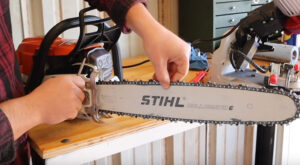

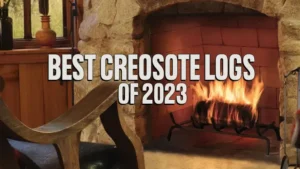


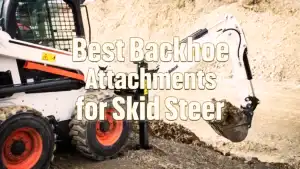
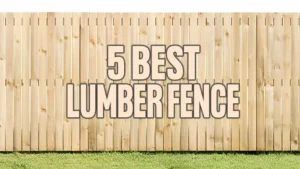





We have an opportunity to purchase 3/4" spruce flooring for a cabin we are building in the mountains of northern New Mexico. The cabin will be unheated for much of the winter. Will the spruce flooring work in these conditions? Thanks, Steve
Steve Sultemeier
September 15, 2023 3:49 pm